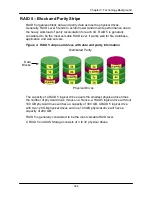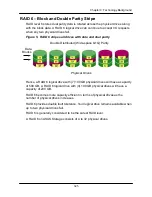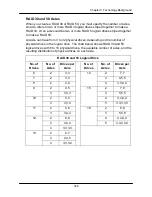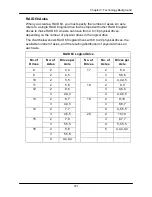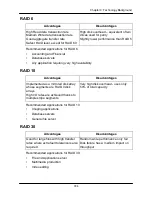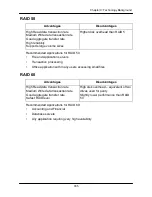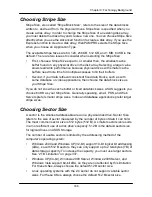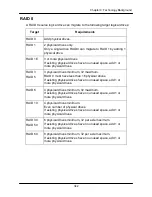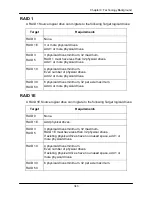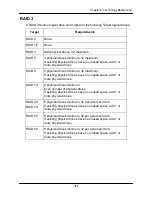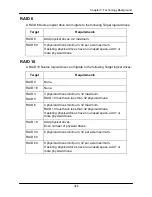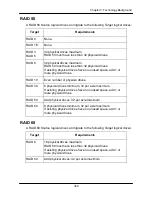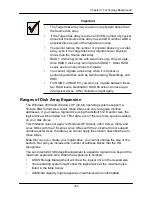
334
Chapter 9: Technology Background
RAID 6
Advantages
Disadvantages
High Read data transaction rate
Medium Write data transaction rate
Good aggregate transfer rate
Safest RAID level, except for RAID 60
High disk overhead
– equivalent of two
drives used for parity
Slightly lower performance than RAID 5
Recommended Applications for RAID 6
•
Accounting and Financial
•
Database servers
•
Any application requiring very high availability
RAID 10
Advantages
Disadvantages
Implemented as a mirrored disk array
whose segments are RAID 0 disk
arrays
High I/O rates are achieved thanks to
multiple stripe segments
Very high disk overhead - uses only
50% of total capacity
Recommended Applications for RAID 10
•
Imaging applications
•
Database servers
•
General file server
RAID 30
Advantages
Disadvantages
Good for large files with high transfer
rates where extra fault tolerance is also
required
Random write performance only fair.
Disk failure has a medium impact on
throughput
Recommended Applications for RAID 30:
•
File and Application server
•
Multimedia production
•
Video editing
Summary of Contents for DS300f
Page 1: ...ASUS Storage DS300f DS300i User Manual Version 1 0 ...
Page 10: ...x Language 178 Closing Smart NAS Console 178 ...
Page 27: ...8 Chapter 1 Introduction to ASUS Storage ...
Page 57: ...3 8 Chapter 2 ASUS Storage Installation ...
Page 73: ...54 Chapter 3 ASUS Storage Setup ...
Page 164: ...14 5 Chapter 4 Management with ASUS Storage Management ...
Page 221: ...202 Chapter 5 SmartNAVI ...
Page 235: ...216 Chapter 6 Management with the CLU Figure 4 Controller Status LED Controller Status ...
Page 337: ...318 Chapter 8 Maintenance ...
Page 425: ...406 Chapter 11 Support ...
Page 433: ...414 Appendix A Setting up NAS Network Drives ...
Page 449: ...430 Index ...





